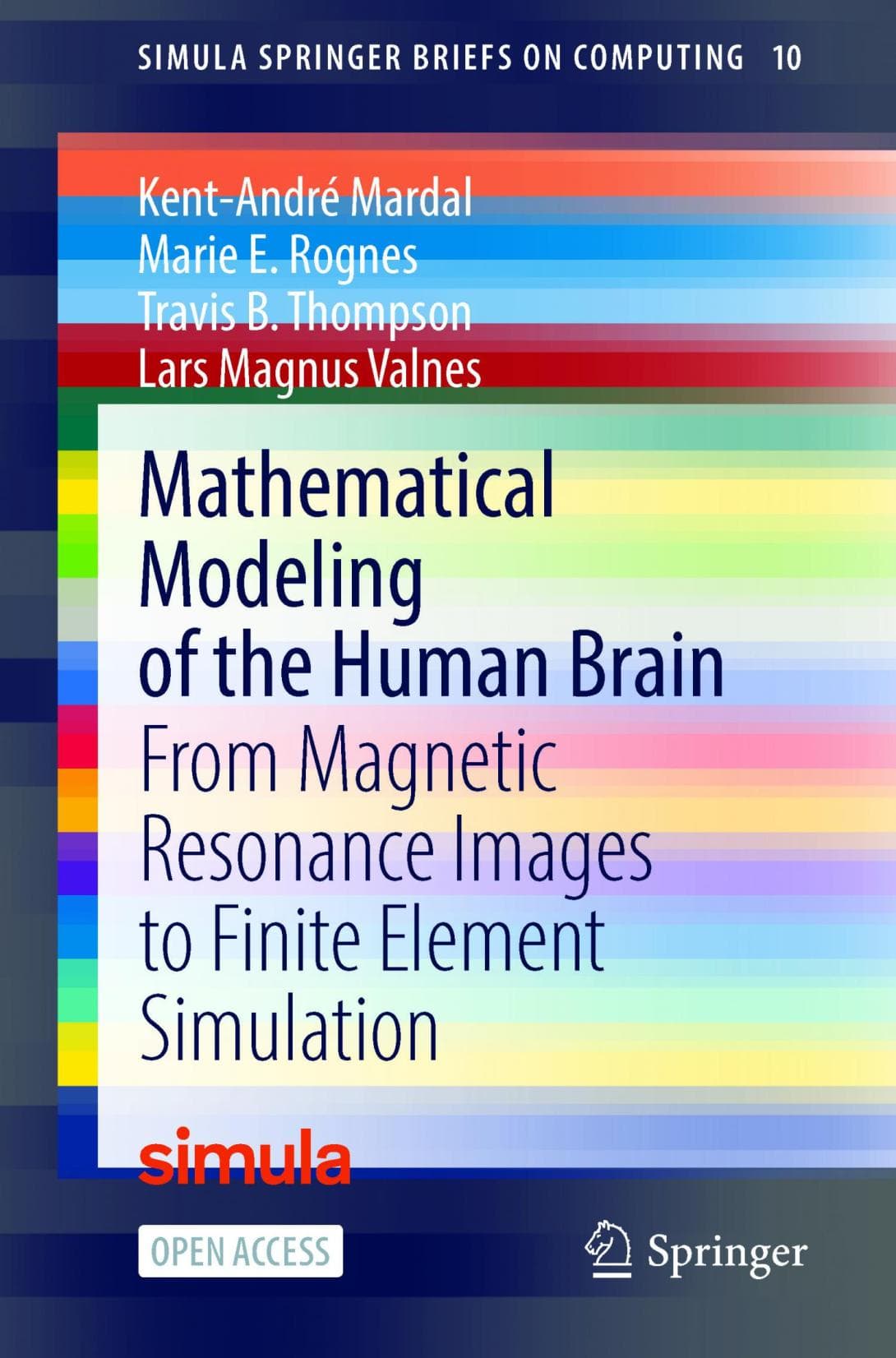
New book in the SpringerBriefs series: Mathematical Modeling of the Human Brain
Published:
The newest volume of the Simula SpringerBriefs on Computing is now available for download. This open access book bridges common tools in medical imaging and neuroscience with the numerical solution of brain modelling PDEs.
The Simula SpringerBriefs on Computing aims to provide introductions to select areas of research in computing. Each volume aims to provide an introduction to, and overview over, research fields that can otherwise be inaccessible. This is the 10th volume in this series.
Mathematical Modeling of the Human Brain: From Magnetic Resonance Images to Finite Element Simulation by Kent-AndréMardal, MarieE.Rognes, TravisB.Thompson, and LarsMagnusValnes is now available for download. This open access book bridges common tools in medical imaging and neuroscience with the numerical solution of brain modelling PDEs. The connection between these areas is established through the use of two existing tools, FreeSurfer and FEniCS, and one novel tool, the SVM-Tk, developed for this book. The reader will learn the basics of magnetic resonance imaging and quickly proceed to generating their first FEniCS brain meshes from T1-weighted images. The book's presentation concludes with the reader solving a simplified PDE model of gadobutrol diffusion in the brain that incorporates diffusion tensor images of various resolution and complex, multi-domain, variable-resolution FEniCS meshes with detailed markings of anatomical brain regions. After completing this book, the reader will have a solid foundation for performing patient-specific finite element simulations of biomechanical models of the human brain.
About the authors
Kent-André Mardal is a professor of mechanics at the University of Oslo and an adjunct research scientist at Simula Research Laboratory. Research interests include computational modeling of neuroscience applications, including the recently proposed glymphatic system, along with robust and accurate methods.
Marie E. Rognes is Chief Research Scientist and Research Professor in Scientific Computing and Numerical Analysis at Simula Research Laboratory, Oslo, Norway and Professor II at the Department of Mathematics, University of Bergen, Norway. Current research is focused on mathematical modelling and numerical methods for brain mechanics.
Travis Thompson is an applied and computational mathematician. Current research encompasses numerical analysis, scientific computing, machine learning and the mathematical modeling of soft tissue and the prion-like evolution of neurodegenerative disease proteopathy.
Lars Magnus Valnes is an applied and computational mathematician with active research interests in scientific computing, patient-specific modeling, MRI brain analysis and the mathematical modeling of soft tissue and neurodegenerative disease pathology.
SpringerSeries
TheSimula SpringerBriefs on Computingaims to provide introductions to select research in computing. The series presents both a state-of-the-art disciplinary overview and raises essential critical questions in the field. Published by SpringerOpen, all Simula SpringerBriefs on Computing isopen access, allowing for faster sharing and wider dissemination of knowledge.
By publishing the Simula SpringerBriefs on Computing, Simula Research Laboratory acts on its mandate of emphasizing research education. Books in this series are published only by invitation from a member of the editorial board. This is the 10th volume.For previous volumes, click here.